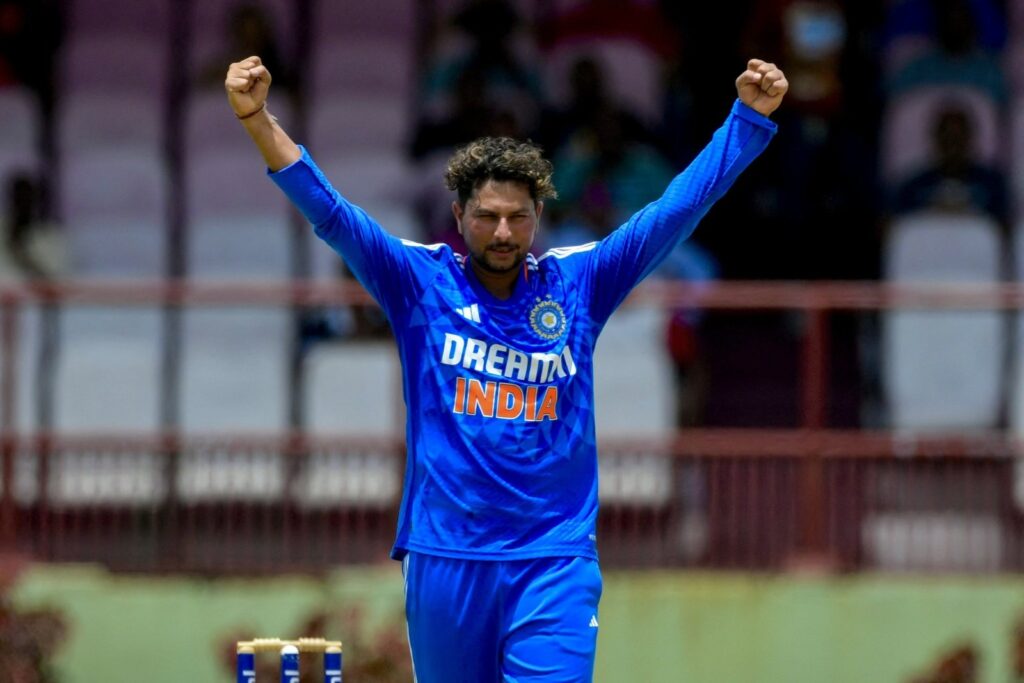
The India-South Africa T20I series had enough thrills and spills. The likes of Suryakumar Yadav, Reeza Hendricks, Rinku Singh and Yashasvi Jaiswal showcased their pyrotechnics, while the Indian bowlers stepped up at the right time in the third game. So, with the ICC T20 World Cup in the USA and the West Indies looming, what are the three points that we learnt about this young Indian team?
Kuldeep weaving his magic
Kuldeep Yadav showcased his quality by bagging six wickets for the cost of just 43 runs in the series. It included a five-for in the final game. Granted that the track at the Wanderers was on the drier side, Kuldeep mixed up his pace and lengths very well.
For a while there was a school of thought that as Kuldeep doesn’t exactly bowl quicker through the air, the batters have started to line him up a little more in the shortest format. To his credit, Kuldeep seems to have worked on that aspect of his game. This year, Kuldeep has taken 14 wickets at an average of just 13.14 and at a noteworthy economy rate of 5.96.
Incidentally, earlier in the year, Kuldeep’s coach, Kapil Pandey, had told RevSportz: “From the time of Covid-19, we were working hard. The ball was coming out slow, especially in T20s. One has to bowl faster, one has to add more revs on the ball. As per the changing times, changes have to be done in bowling.”
The intent of the fast bowlers at Wanderers
In the first over itself, Mohammed Siraj set the tone by generating late out-swing to beat the bat of Reeza Hendricks time and again. The crux of his bowling was to get the ball to in-slant a little bit, before moving it away from the batter. Mukesh Kumar followed it up by hitting the seam often and Arshdeep Singh pounded the deck hard enough to extract bounce.
It is true that the spinners took seven of the wickets to fall in that game, but it was heartening to see the Indian pacers bowl with intent upfront. Incidentally, in the recent past, there have been question marks over the depth in the pace department.
Rinku Singh, the finisher
Enough has been said about Rinku Singh’s uncanny ability to provide finishing touches to an innings — be it batting first or second. He provided further evidence of his skills in the second game in Port Elizabeth. At the end of the 12th over, Rinku was batting on 18 off 16 deliveries. But once again, he changed gears at the right time and ended up with 68 off 39 deliveries.
Rinku seems to know when to press the accelerator pedal. He also has the required tools to execute his plans. Rinku can play cross-batted shots, but he juxtaposes that with rotation of strike and orthodox strokes. He also rarely loses the shape of his shots. Basically, Rinku is a versatile batter.
Surya Kumar scored a magnificent century as India leveled the series at 1-1.
Prodigious talents like Rinku Singh and Yashasvi Jaiswal left their mark, while Kuldeep Yadav shone with an exceptional fifer.
Here are the key takeaways from India’s penultimate bilateral T20 series… pic.twitter.com/qr4ig4aNe1
— RevSportz (@RevSportz) December 15, 2023
The Indian think-tank also would be pleased that Yashasvi Jaiswal compiled a fifty in the final game. However, there are still a few lingering doubts hovering over the Indian team ahead of the World Cup.
One of them is over whether Shubman Gill is the right man for the job at the top of the order. This year, Gill is averaging 26 with the bat in the shortest format. He has also been dismissed for single-digit scores nine times out of 13 matches. Jitesh Sharma also couldn’t make an impression in the middle order. But it is unfair to gauge a player’s ability on the basis of a couple of games.
India also don’t have the luxury of batters who can bowl a few overs in the middle of an innings. Tilak Varma, was the only one tried, and he ended up bowling a solitary over in Johannesburg. It is high time that the leadership group gives a few more overs to the part-timers.



